- Home
- Fishing Techniques
- Baitcasting
Baitcasting, Spinning & Plugging
But first, this 'Is it baitcasting or is it spinning?' thing. Well, if I understand it correctly, we’ve our American friends to blame for the confusion - but they just might say it's us.
When they differentiate between these two descriptions, they’re referring to the tackle - specifically the rod and reel, not the technique.
A bait casting outfit simply means a small multiplier reel (that's a traditional reel in US speak) coupled with a casting rod - often a trigger grip design specifically intended for use with a small multiplier reel.
On such an outfit the multiplier is alternatively referred to as a baitcaster reel, and trigger grip rods are known as casting rods.
A spinning outfit comprises a standard spinning rod and a fixed spool reel, which thankfully is referred to as a spinning reel on both sides of the Atlantic.
But there's more, and it's us Brits this time.
We differentiate between spinning and plugging. Similarly, it's a tackle thing - not the rod or the reel, but the lure:~
- If it's a plug, then not surprisingly, you're plugging;
- Anything else - a spinner, spoon, shad or leadhead etc - you're spinning.
And the 'bait' in baitcasting? Well, it's not bait, it's a lure.
I'm really pleased we've cleared that up...
Crankbaits and Plugs
My apologies if this is all getting a bit tedious, but again along the lines of ‘two nations separated by a common language’, when our pals on the other side of the pond talk about ‘crankbaits’, they mean small plugs that have been designed to be used with baitcasting and spinning outfits, rather than trolled behind a boat.
And just one more terminology thing; ‘their’ bass is the Striped Bass (or ‘Striper’ as it’s affectionately known). This beauty grows much larger than the European Seabass – up to 100lbs or more, though few over 50lbs are caught these days.
In UK waters, your spinning/plugging/baitcasting outfit is most likely to be used with mackerel or bass in mind, perhaps with the odd pollack and garfish thrown in, so a light to medium outfit is all you need. A fast-tapered rod of 10ft to 11ft, capable of casting lures up to 3oz, coupled with a spinning or baitcasting reel loaded with around 200m of 10lb monofilament would be my choice.
Saltwater spinning in the UK is is a summer activity, when mackerel and bass can be found close inshore feeding on baitfish.
Spinning for Mackerel
Mackerel are most likely to be found in deep water close in, the steeply shelving Chesil Beach in Dorset being a prime example of such a location.
They’ll be feeding on brit (small fish fry), so use a small spinner, like a Mepps for example, or a small Abu Krill which casts particularly well.
Alternatively try a string of small Hokkai lures weighted by a pear lead on the end of the line. Unlike bass, mackerel are willing to feed at any time of day and at any state of tide. Middle of the day, bright sunshine, slack water? No problem, if they’re there, you’ll catch them.
Spinning and Plugging for Seabass
Bass are more adventurous in their feeding grounds, but rather more finicky as to when they feed. They favour rocky, boulder strewn shorelines and spring tides. When high or low water coincides with dusk, then the odds of success are at their highest, particularly so during the hour either side of top or bottom of the tide.
When the tide is running fast as in a tide race or bottleneck, cast your lure up tide and retrieve steadily allowing the lure to swing round with the current as you bring it back to the rod tip. Don’t be in too much of a hurry to pull it from the water; fish it right up to the rod tip, as many a fine fish has been hooked just at this point.
When freshwater baitcasting it’s definitely best to vary the rate of retrieve, raising and lowering the rod tip making your lure imitate a wounded fish. Saltwater fish don’t seem to be quite so fussy; nevertheless, I think that momentarily stopping and twitching the lure during the retrieve does make a difference.
Some lure manufacturers cater for this with a range of ‘suspending’ lures which dive to a fixed depth, then neither rise nor sink when the retrieve rate is slowed or even stopped completely.
The bass will be feeding on baitfish such as sprats and sandeels, so your lure should resemble one of these. There a large number casting lures that will do the job, including spoons, plugs and leadhead shads and swimbaits.
Leadhead shads are soft-bodied latex lures designed to imitate small fish and sandeels. The weighted heads enable them to be cast without having to incorporate an additional weight on the line, This, together with their realistic swimming action, makes them a firm favourite of shore-based anglers with prime bass in mind.
Most shore-based bass anglers favour spoons over spinners, the outright favourite (well mine anyway) being a Toby Spoon.
The technology in modern plugs (OK, crankbait) is impressive. Specialist plug manufacturers including Rapala and Yo-Zuri market versions with internal steel balls to aid casting and to create a sonic vibration in the water.
Others types include topwater lures, designed to operate on the surface, and floating/diving versions, sinking versions and the previously mentioned suspending lures.
Working the Lure
If you’re baitcasting a sinking version of a plug, it’s very useful to know how fast it sinks.
Some manufacturers print the rate of sinking on the lure’s packaging, but for those that don’t it’s simple to find it out providing you've got a boat with a depthfinder.
Choose a calm day at anchor, and drop the lure over the side making sure that the line’s slack enough to allow it to sink naturally. Count the seconds between it hitting the surface and its arrival on the seabed, which you can tell by watching the line at the surface as it follows the lure down. Now check the depth on the depthsounder making due allowance for any keel offset, divide the depth by the time and you’ll know the lure’s sinking rate.
Then, when using it for real, by counting off the seconds following the lure hitting the surface you’ll know the approximate depth of the lure when you start your retrieve.
Search for fish at various depths. When you get a strike, focus on at that level for at least the next few casts. Vary the speed of retrieve; try short sprints followed by a period of steady winding. Then stop for a few seconds to allow the lure to sink deeper, and move the rod from side to side to change its direction.
Remember that you’re trying to imitate the action of a small, injured and frightened fish, separated from the relative safety of its shoal.
Recent Articles
-
Sea Fishing Rods and Reels Must Be Compatible for a Balanced Outfit
Mar 08, 21 08:30 AM
A quality reel fitted to a quality rod doesn't necessarily make it a quality outfit. Your fishing rods and reels have to be properly matched if you're to get the best out of them, and here’s how -
Essential Lure Fishing Tips That All Saltwater Anglers Should Know
Mar 08, 21 04:51 AM
Which single lure fishing tip applies to trolling, jigging, baitcasting, spinning, fly fishing and any other branch of lure fishing? Well, it is the one at the top of this list -
Vital Jig Fishing Tips That You Really Cannot Afford To Miss!
Mar 07, 21 10:20 AM
Essential jig fishing tips to help you select the right lure for successful jig fishing, together with the techniques required to get the most out of your jig fishing outfit












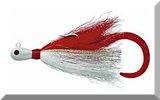
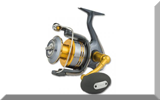
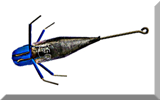
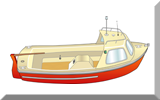
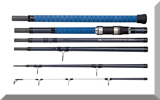
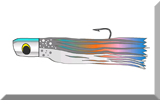
New! Comments
Have your say about what you've just read! Leave me a comment in the box below.